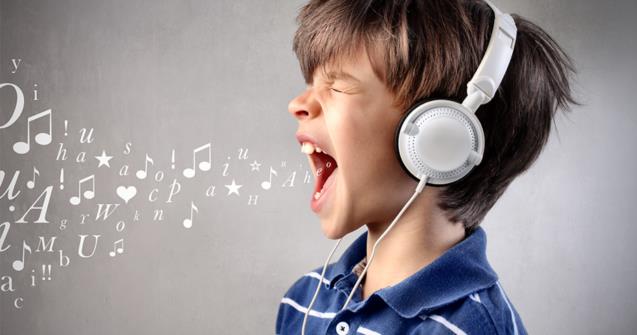
Globule wonders...
How does sound travel?
Experiment: Sound Propagation
Hypotheses: Ask children if they know how sound travels. How does it get from the object producing the sound to our ears? Does sound travel only through air? Does it also travel through water or through solid objects? Listen carefully to children's hypotheses. Avoid giving them the answers right away! They will discover the answers on their own through the experiment.
Material:
- A metal spoon for each child
- A piece of string for each child (approximately the length of their arm)
Manipulation:
- Tie your spoon to the middle of the string with a sturdy knot. Ask your daycare worker for help if you cannot do it yourself.
- Hold the two ends of the string and bang the spoon on the table. You can hear the sound travel through the air from the spoon to your ear.
- Now, wrap the string around your index fingers. Be sure to wrap it around the same number of times on both sides so the spoon remains in the center of the string.
- Place your index fingers in your ears.
- Bring your head down close to the table so you are able to bang the spoon on the table while keeping your fingers in your ears. How is the sound different than before? Is it longer or shorter? Stronger or lighter? Why?
Explanation: First of all, sound travels only one way: sound waves. They are like waves which begin at the object which is producing the sound and travel in all directions. Your ear captures one of the waves and hears the sound. The farther you are from the object, the lighter the sound since it is lost in the air.
When you placed your fingers holding the string in your ears, you created a different path for the sound. It began at the spoon, then travelled in the string, then through your fingers, and then entered your ears. Sound travels much better through solid objects than through air since there is little loss. Here are other ways of verifying this:
- Deposit a watch with hands on the table. Listen to the sound it produces in the air. Place your ear on the table and listen to the sound propagate in the table.
- This principle is also valid for water. Yes, sound travels better through water than air! The next time you take a bath, sit in the water and bang a metal object on the bottom of the bathtub. Listen carefully to the sound propagate in the air. Lie back so your ears are in the water. Bang the same object. Fun isn't it?
See if you can find other ways to demonstrate that sound travels better through solid objects and water than through air...
Angélique Boissonneault
has a Bachelor's Degree in Biological Science. She has worked in a laboratory and tested her knowledge. She has taught Math, Chemistry, and Physics. She has also developed a simplistic and innovative approach designed to introduce young children to scientific experiments, old and new. She created her friend Globule. This character is sometimes red, and sometimes white. He guides little ones through their scientific experiments and discoveries. It is clear to see Angélique is passionate about children and science. Globule's Approach.

 Home
Home Theme activities
Theme activities
 Babies and toddlers
Babies and toddlers
 Arts and crafts
Arts and crafts
 Science
Science
 Creative recipes
Creative recipes
 Tips and tricks
Tips and tricks
 Special needs
Special needs
 Extra activities
Extra activities
 Educ-TV
Educ-TV
 Newsletter
Newsletter  Online store
Online store Educatall club
Educatall club

